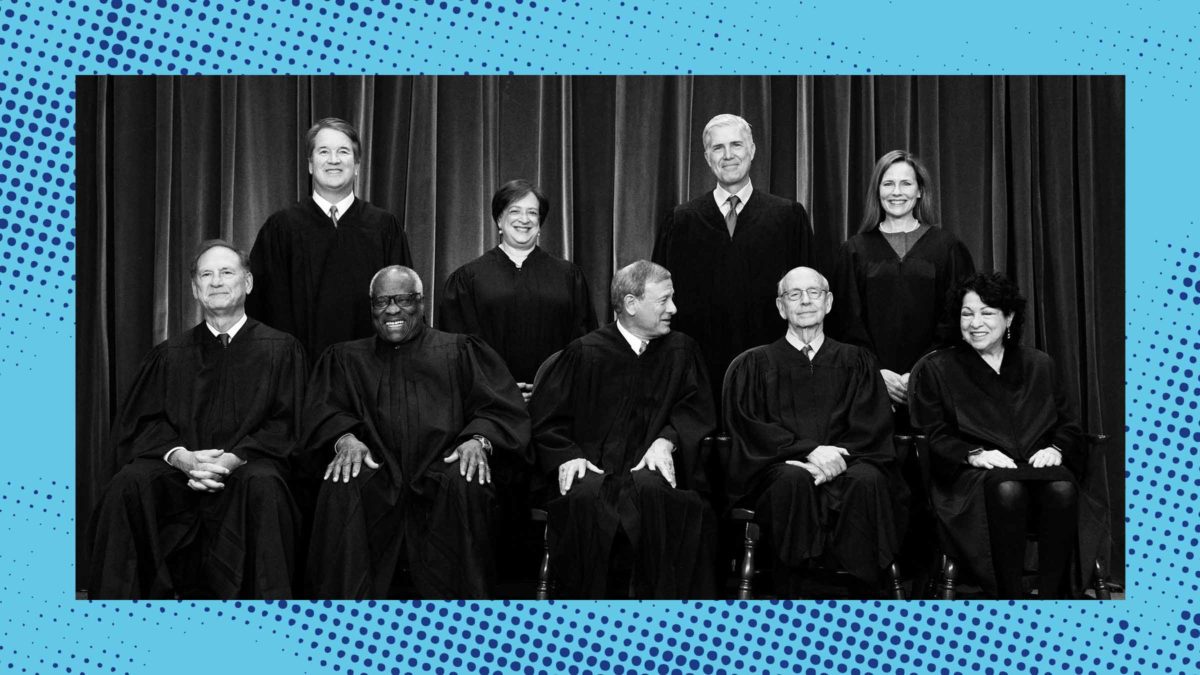This is a difficult time to be a Supreme Court institutionalist. Public trust in the high court has fallen to historic lows, while radical reform proposals like Court expansion and term limits gain alarming degrees of traction. These unfortunate developments flow from the mistaken but increasingly widespread view that the substance of a Supreme Court decision is more important than the temperament, intellect, and credentials of the justices that produced it.
Rather than sit back and wait for the tides of popular opinion to wash away the last traces of judicial legitimacy, we institutionalists must grab the reins of reform and advance our own ideas to repair the Court’s damaged brand. That’s why now is the time to restore trust in the Court’s role as the scrupulously neutral and nonpartisan interpreter of our laws by reinstituting one of the Court’s most storied traditions: circuit riding.
This practice, also known as “riding the circuit,” harkens back to some of the most distinguished jurists in this country’s history—intellectual giants like Chief Justices John Jay, John Marshall, and Roger Taney. In the early years of the young republic, Supreme Court justices traveled hundreds of miles, often on horseback, to hear federal cases in locations scattered across the states. Like powdered wigs (and white skin), circuit riding was mandatory for members of the Court until Congress abolished the practice in 1911. This was hazardous, taxing work, requiring the justices to be away from their families (and slaves) for many months on end. But circuit riding also contributed to a sense that Supreme Court justices were men (only men) of the people, infused with the frontier hardiness and democratic spirit that so invigorated the nation in those days.
Imagine it: Chief Justice John Roberts, trotting gaily through a field of marigolds on a glistening thoroughbred as he prepares to announce that requiring all voters show proof of country club membership does not unduly burden the right to vote. Or Justice Neil Gorsuch, as comfortable in the saddle as an anti-abortion activist at a Federalist Society gala, riding off into the sunset after declaring that the Establishment Clause mandates taxpayer funding for Bible schools everywhere. Or Justice Samuel Alito sitting high astride a beautiful brown Clydesdale, ascending the Continental Divide on his way to affirm the constitutionality of an Idaho law that bans the word “racist” from everyday conversation.
Reinstituting circuit riding would solve a number of the problems facing the Court today. For example, many of the Court’s critics contend that the six-justice conservative majority applies its originalist philosophy selectively to arrive at outcomes preferred by rightwing interests. (Originalism is a judicial philosophy that requires interpreting the Constitution from the perspective of our nation’s most venerated colonial-era slaveholders.) Galloping across the countryside like revolutionary minutemen would provide a thundering answer to that criticism. After all, a true originalist adheres to 18th-century practices regardless of modern developments like air travel, video conferencing, or the Voting Rights Act.
Similarly, riding circuit would restore public respect for the Court by associating Supreme Court justices with large, powerful animals. It’s natural to feel reverence for a person in command of a big meaty steed, even when that steed is trampling your fundamental rights.
This proposal also has the potential to bridge the partisan divide that afflicts other Court reform efforts. Circuit riding will naturally appeal to conservatives as a powerful reminder that rugged individualism—that trait personified by self-made American heroes like Brett Kavanaugh and Neil Gorsuch—has not gone out of style in the U.S. of A. But reinstituting circuit riding could also gain the support of some liberals, especially those who are uncomfortable with reforms that might appear politically motivated. Circuit riding would enhance the Court’s nonpartisan mystique, while also signaling a bold, innovative, progressive transformation in the way Supreme Court justices commute.
That’s not to say that circuit riding won’t have its opponents. Some will decry it as a distraction from real, structural issues with the Court. They will argue that the Supreme Court is an inherently anti-democratic institution that deploys sham legal theories to serve the interests of multinational corporations and billionaire religious zealots while systematically trimming the rights of workers, voters, women, racial minorities, unions, immigrants, the poor, victims of police brutality, students, and anyone else who can’t keep Neal Katyal or Ted Olsen on retainer. These critics will claim that restoring this tradition will only reinforce the public perception that the Court is an anachronistic institution that should have been overhauled a long time ago.
But we live in an age of anachronisms. Rather than resist the resurgence of old problems like abortion bans, poll taxes, and public gunfights, our nation would do well to embrace the best traditions of our forefathers. As it has so often in the past, the Supreme Court can lead this national retrenchment by climbing into the saddle and riding bravely into the future.

